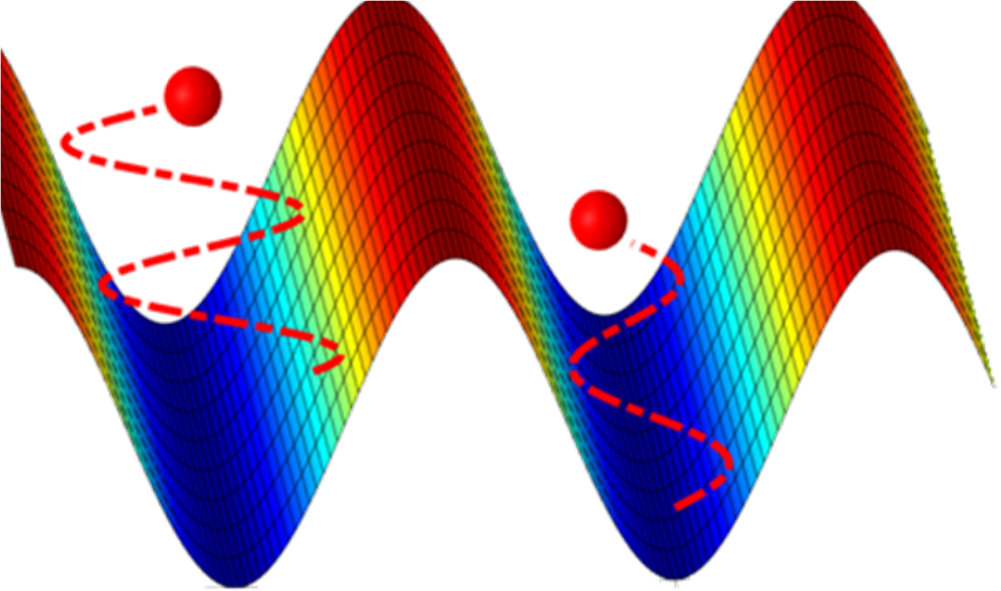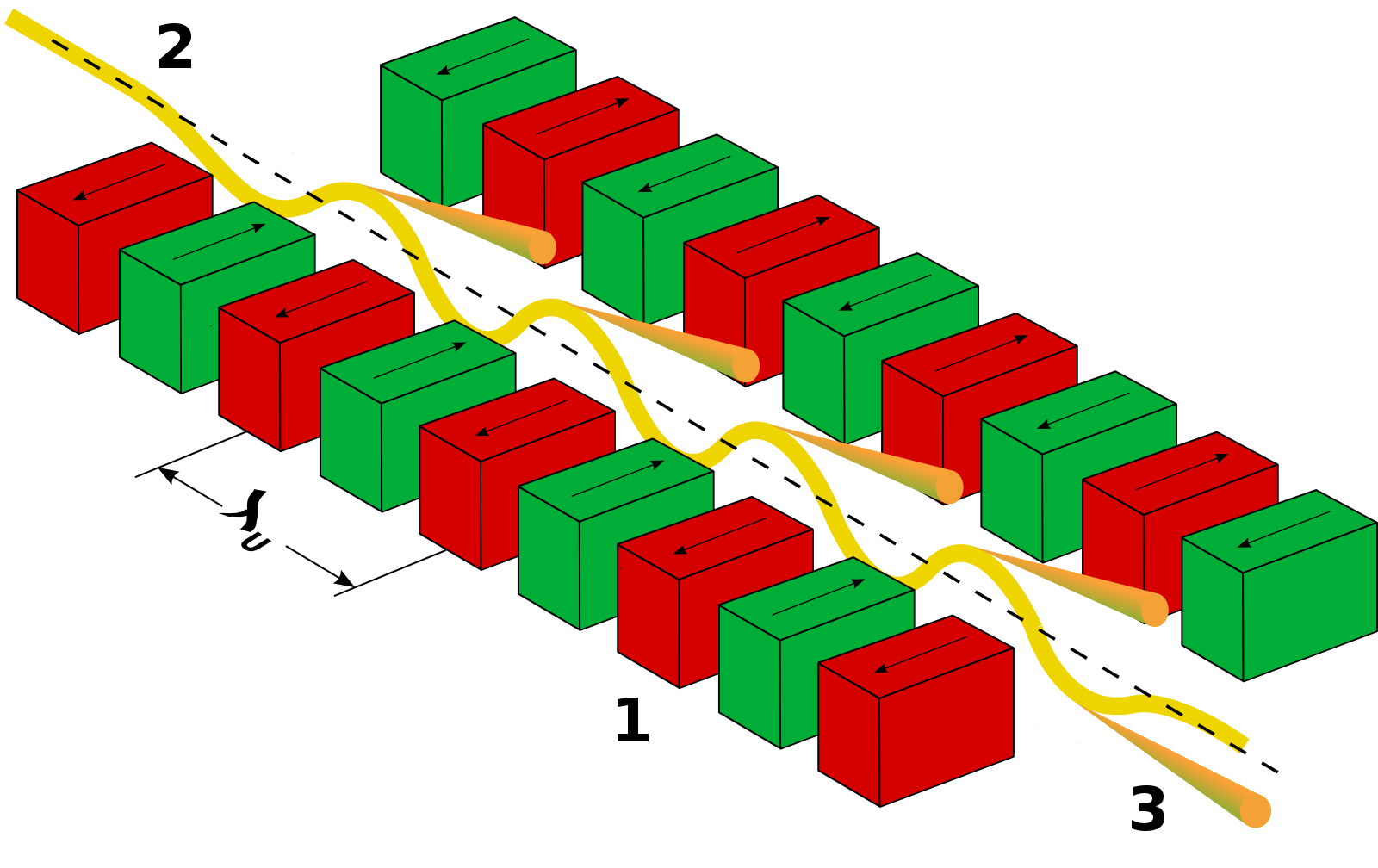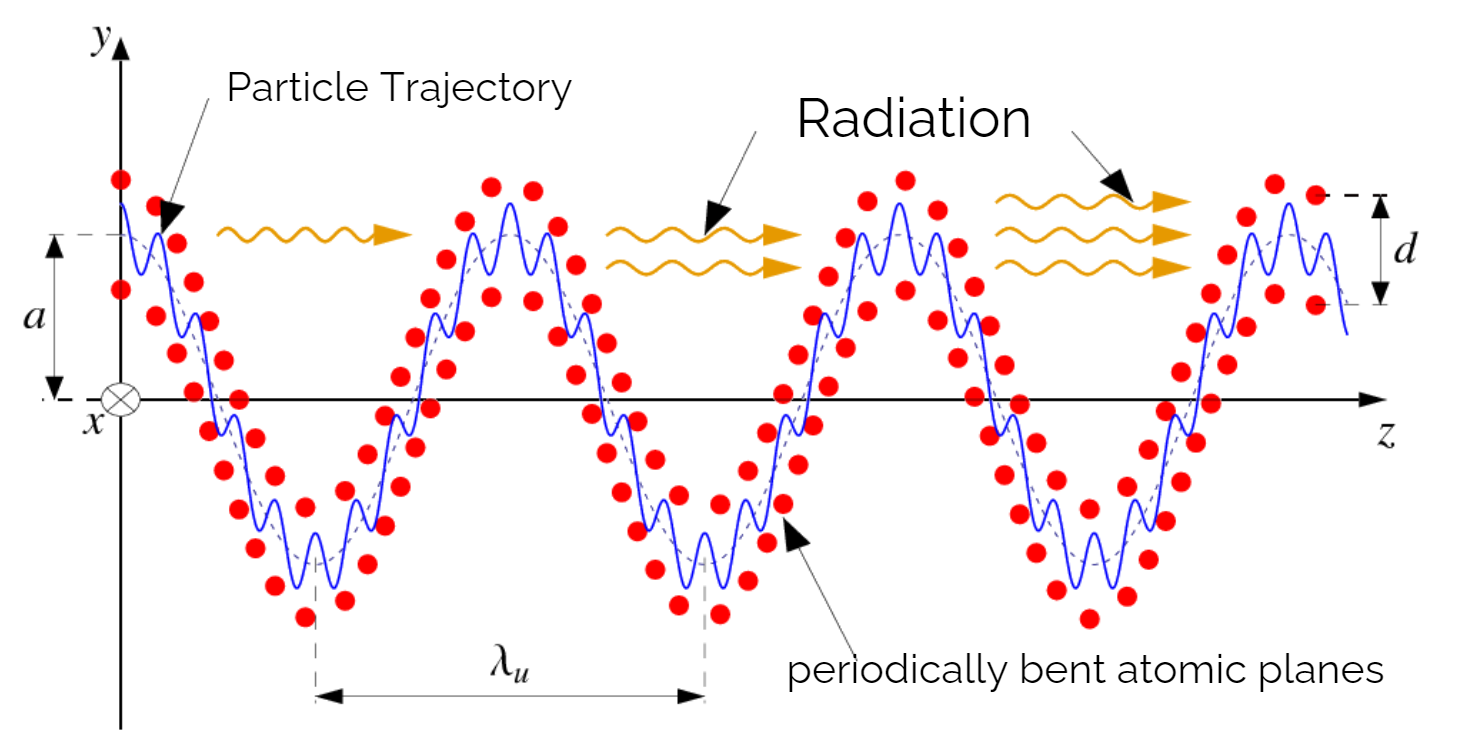Research Lines
|
Crystalline gamma-ray sourcesRecent advancements in gamma-ray Light Source (LS) technology are opening new possibilities for the generation of high-energy photons, ranging from approximately 100 keV to the GeV range. These innovative sources are designed by exposing oriented crystals—such as linear, bent, and periodically bent crystals—to beams of ultra-relativistic charged particles like electrons and positrons. By precisely controlling the structure and orientation of these crystals, it is possible to harness their unique properties to create gamma-ray radiation through various mechanisms, including crystalline channeling radiation, crystalline synchrotron radiation, and crystalline undulators. A crystalline undulator, for instance, leverages the periodic bending of the crystal lattice to induce a channeling motion of charged particles, leading to the emission of gamma rays. This approach holds promise for producing coherent superradiant radiation at wavelengths significantly shorter than those achievable with traditional methods. Such advancements could transform applications across basic sciences, including nuclear physics, solid-state physics, and life sciences, offering new tools for research and development in these fields.
Magnetic undualtor Vs. Crystalline undulatorTraditional gamma-ray Light Sources rely on magnetic undulators, where magnetic fields are used to force charged particles into a sinusoidal path, causing them to emit synchrotron radiation. While effective, this method has limitations in terms of the photon energy range and the wavelengths that can be produced. Crystalline undulators, on the other hand, utilize the intrinsic properties of a periodically bent crystal to achieve similar effects. When a beam of ultra-relativistic charged particles passes through such a crystal, it undergoes a channeling motion that can result in the emission of high-intensity gamma-ray radiation. One of the major advantages of crystalline undulators is their ability to produce radiation with wavelengths that are orders of magnitude shorter than those obtainable with magnetic undulators, reaching well below 1 Angstrom. This makes them particularly valuable for applications requiring extremely high photon energies and very short wavelengths, which are beyond the capabilities of existing Light Sources.
Technological OutputThe development of crystalline gamma-ray Light Sources is expected to have a wide array of technological applications. In addition to their use in fundamental research, these sources have potential practical applications in technology, medicine, and industry. For example, they could be used for the disposal of radioactive waste through advanced photo-transmutation techniques or the production of radioisotopes for nuclear medicine. Theoretical, computational, and experimental advancements in this field are paving the way for key technological developments, with the promise of creating more efficient, versatile, and powerful Light Sources. The ongoing research and collaboration among international experts are crucial in overcoming the challenges and achieving the practical realization of these novel gamma-ray sources, thus opening new horizons for scientific exploration and technological innovation. .
|
||||||||||
|
|
|
|
|
|
|||||||
@TECHNO-CLS
@N-LIGHT




